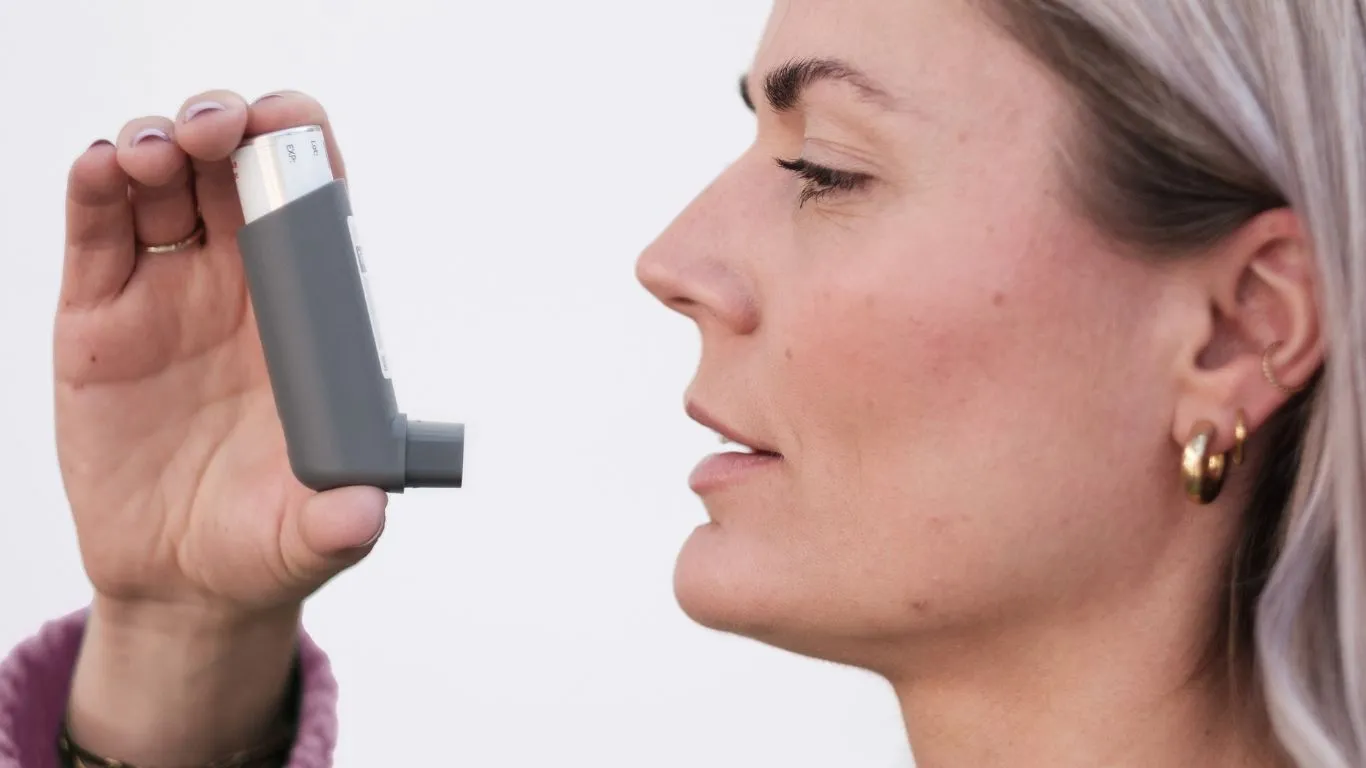5 Asthma-Safe Ways to Scent Your Home Naturally and Effectively
As a pulmonary nurse practitioner who’s helped countless patients manage their breathing struggles, I know firsthand how tricky it can be to make your home smell nice without triggering asthma symptoms. So many “clean” or “fresh” scents come from chemical-laden products that wreak havoc on sensitive lungs. That’s why I decided to write this guide on asthma-safe ways to scent your home—because no one should have to choose between a cozy, great-smelling space and their respiratory health. Trust me, I’ve been there, dodging artificial sprays and sneezing through “natural” candles. Let’s dive into the options that are actually safe and soothing—for you or your loved ones dealing with asthma.
Why Scented Products Can Be Problematic for Asthma

You’d be surprised how many common household fragrance products contain volatile organic compounds (VOCs), which can really stir up asthma symptoms. I’ve had patients come in after a weekend of spring cleaning and tell me their chest felt tight and their inhaler didn’t seem to work as well. The culprit? Most likely, that fancy air freshener plug-in or heavily scented candle.
Here’s the thing—VOCs don’t just cause irritation, they can cause inflammation in already sensitive airways. Even products labeled “green” or “natural” can be misleading. Terms like “natural fragrance” aren’t regulated and can still include a long list of unlisted chemicals. So it’s important to be picky about what you use in your living space.
Common Triggers Found in Fragrance Products
- Perfumes and colognes
- Aerosol sprays (cleaners, fresheners, hair sprays)
- Scented candles and wax melts
- Essential oils (yep—more on that below!)
- Detergents and dryer sheets with added fragrance
Just walking into a heavily scented room can trigger a coughing fit or even an asthma attack for some people. I’ve had asthma patients whose symptoms improved dramatically just by switching their laundry products and tossing their wall plug-ins.
What Makes a Scent Asthma-Safe?

Not all scents are created equal when it comes to lung safety. Asthma-safe scenting options share a few important characteristics. As someone who’s spent years in the clinic and plenty of time experimenting in my own home, these are the markers I look for:
- No synthetic fragrance. If it says “fragrance” or “parfum” in the ingredients list—skip it.
- Low or no VOCs. These are chemical compounds that become vapors or gases and can irritate the lungs.
- Hypoallergenic and non-toxic. These labels aren’t perfect, but they’re a helpful starting point.
- Unscented base products. Starting with unscented cleaning and laundry supplies gives you control over added scents.
Another trick I’ve learned: keep it subtle. You don’t need your whole house to smell like a lavender field exploded. A mild, natural aroma in key areas is all you need to create a cozy vibe without overwhelming sensitive lungs.
Asthma-Safe Ways to Scent Your Home That Actually Work

1. Simmer Pots
One of my absolute favorite ways to fill my home with fragrance without setting off a coughing spell is the good old-fashioned simmer pot. I toss some citrus peels, cinnamon sticks, cloves, and a few sprigs of rosemary into a small pot of water and let it simmer on low. Instant cozy aroma, no chemicals needed.
Tip: Keep an eye on the water level and never leave it unattended. Bonus—it adds a little moisture to dry indoor air, which is a plus for asthmatic lungs.
2. Baking Soda + Essential Oil Sachets (With Caution)
Now, about essential oils—they’re not automatically asthma-friendly. I’ve seen too many patients react to diffused oils, especially peppermint and eucalyptus. But used in small, contained amounts, like in sachets or baking soda jars, some gentle oils like lavender or chamomile can be tolerated by many.
Here’s a simple method:
- Fill a small jar with baking soda
- Add 3–5 drops of a very mild essential oil
- Cover with breathable fabric and a rubber band
- Place in a bathroom or closet for a soft scent
Always test new scents in small spaces first. And if you feel even the slightest twinge of tightness in your chest—ditch it. Not worth the risk.
3. Activated Charcoal with Herbs
This one’s less about adding scent and more about neutralizing odors naturally. I’ve used this a lot in patient homes that needed a fresh reset without added smells. Activated charcoal absorbs odors and toxins without releasing anything into the air. Mix it with dried herbs like mint or lavender buds for a barely-there freshness that’s asthma-safe.
4. Houseplants That Naturally Freshen the Air
Plants won’t flood your home with scent, but they do clean the air and add a fresh vibe. I’m a huge fan of peace lilies, snake plants, and spider plants. They’re all low-maintenance and great at removing indoor air pollutants. Just make sure no one in your home is allergic to them—always double-check first.
Coming home to a space that smells clean and feels safe is a game-changer, especially when you’re managing a chronic condition like asthma. In the next section, I’ll walk you through some simple DIY blends and routines that I use in my own home—and with my patients—that balance a fresh environment with safe breathing.
DIY Scents: Safe Blends You Can Actually Breathe Around

So, let’s talk DIY—because sometimes the safest way to make sure a product is truly asthma-friendly is to make it yourself. I’ve been mixing up my own home scents for years now, and not only do they smell great, but I also know exactly what’s in them. That peace of mind? Totally worth the little extra effort.
Here are a few of my go-to blends and techniques, all tried and tested in my home (and recommended to my more scent-sensitive patients).
1. Lemon & Rosemary Air Mist
This one is bright, fresh, and not overpowering. Plus, it’s super easy to make. I always keep a small glass spray bottle in my kitchen or bathroom.
- Boil 1 cup of water and steep 2 sprigs of rosemary for 10 minutes
- Let it cool and pour into a spray bottle
- Add 1 tablespoon witch hazel and 3–4 drops of lemon essential oil
- Shake before each use and lightly mist the air (away from faces)
Note: Always keep the spray light—no need to saturate the space. And if you or someone in your home is super sensitive, skip the essential oil and just use the rosemary water.
2. Cinnamon-Orange Gel Jars
When I want a longer-lasting option that won’t need constant attention, I make these little gel air fresheners. They sit on a shelf and do their thing, no diffusers or sprays needed.
- Boil 3/4 cup water, add 2 packets of unflavored gelatin, and stir until dissolved
- Add 1/4 cup salt (preservative), 1/4 cup lemon juice, and your scent blend: 1 cinnamon stick and a few orange peels steeped in hot water
- Pour into small glass jars, add a few dried herbs or a decorative element, and let them set
These are awesome for closets or bathrooms. Subtle and effective, and you control the ingredients 100%.
Cleaning Products That Don’t Choke You Up

One thing I stress with my patients: how you clean your space impacts how it smells. You don’t need to mask odors with fake florals if you start with clean air and surfaces. Unfortunately, a lot of store-bought cleaners are basically asthma attacks in a bottle. Even the ones labeled “fresh scent” are usually packed with harsh chemicals and synthetic fragrance.
Here’s what I use at home—and recommend often:
Natural Cleaning Staples That Work
- White vinegar: Great for windows, counters, bathrooms. Don’t worry—the smell disappears quickly.
- Baking soda: Scrubbing power for sinks, tubs, and even rugs.
- Castile soap: Gentle, unscented, and a solid all-purpose option.
- Hydrogen peroxide: Excellent for disinfecting (and no strong scent).
If you want a little boost of scent, you can add a drop or two of essential oil after testing it first. I always go for lavender or sweet orange—mild, clean, and rarely an issue if used sparingly.
My Personal Go-To All-Purpose Cleaner
- 1/2 cup white vinegar
- 2 cups water
- 1 tsp unscented Castile soap
- (Optional) 1 drop lavender essential oil
I’ve used this combo in dozens of patient homes, and it gets the job done without the cough-inducing fumes. Just make sure you label your bottles clearly, especially if you’ve got kids or pets around.
More Asthma-Safe Ways to Scent Your Home Without Risk

There are a few more sneaky-good ways to keep your home smelling great without reaching for anything artificial. Over the years, these are the small habits I’ve picked up that make a big difference—especially in high-traffic rooms or closed-up spaces like closets or laundry areas.
1. Open Windows Strategically
This one’s obvious but underused. If your outdoor air quality is decent, open the windows for 10–15 minutes every morning. Fresh air flushes out stuffy indoor odors and helps control humidity (which can lead to mold—the real scent enemy).
Pro tip: Use a HEPA filter near windows to avoid pollen or pollution sneaking in during allergy season.
2. DIY Potpourri Pouches
I’ve made these with dried herbs and flowers from my own little garden—lavender, mint, and even rose petals. Toss the dried mix into a fabric pouch or old sock, tie it off, and stick it in drawers, shoes, or gym bags. You get a gentle scent that lasts for weeks, and there’s nothing airborne to breathe in.
3. Charcoal Deodorizers in Shoes & Closets
Honestly, these are a lifesaver. Activated charcoal doesn’t add scent, but it removes the nasty ones so your space just smells… clean. I use them in gym bags, my kids’ cleats, and my coat closet. You can find pre-filled bags online or make your own using bulk charcoal pellets and muslin bags.
4. Scent-Free Laundry—Then Add Freshness
I always tell my patients: start with unscented laundry detergent and fabric softener, then add scent if you tolerate it. One great trick is drying sheets with a sachet of dried herbs (mint or rosemary is nice), or tossing clean clothes in a drawer with a DIY potpourri pouch.
That way, you get a soft, herbal smell without loading your clothes with chemical fragrance that lingers and can irritate airways all day long.
Breathing clean doesn’t mean living scent-free. You just need the right mix of awareness and alternatives—and a little creativity. As someone who sees the effects of airborne irritants in clinic every single week, I can tell you: your lungs will thank you for choosing these gentler options.
Important Tips for Maintaining an Asthma-Safe Home Environment

Now that we’ve covered all the different ways you can safely scent your home, let’s talk about some essential tips for keeping your indoor air as asthma-friendly as possible. I know from personal experience, as well as from working with my patients, that it’s not just about avoiding triggers—it’s about creating an environment that promotes healthy breathing. A few simple habits can make all the difference in how you feel each day.
1. Keep Your Home Well-Ventilated
If there’s one thing I recommend to anyone with asthma, it’s to keep the air moving through your home. Stale air is a breeding ground for allergens, dust mites, and mold—all of which can trigger asthma symptoms. A well-ventilated space reduces the buildup of pollutants and keeps your air fresh. I make sure to open windows whenever possible, even if just for a few minutes a day. Even in winter, a little airflow helps.
If outdoor air quality is a concern (e.g., during pollen season or when there’s pollution), a good air purifier with a HEPA filter can help keep things clean indoors. I personally use a few throughout my home, especially in bedrooms and common areas. Not only do they reduce airborne irritants, but some models also feature carbon filters that reduce odors.
2. Clean Regularly—but Gently
When you’re managing asthma, less is more when it comes to cleaning products. I know it can feel like you need to constantly disinfect everything, but harsh chemicals can worsen asthma symptoms. I’ve seen patients who made a major improvement in their symptoms just by switching from toxic cleaners to natural alternatives, like those I mentioned earlier (baking soda, vinegar, and Castile soap). Cleaning regularly is key, but make sure you’re not creating new irritants in the process.
On top of avoiding synthetic cleaners, regular dusting, vacuuming (with a HEPA filter vacuum), and wiping down surfaces can really cut down on dust, pet dander, and other potential triggers. I love using a microfiber cloth because it traps dust without pushing it around. Also, try to avoid using scented dryer sheets and fabric softeners—many of them contain chemicals that trigger asthma flare-ups.
3. Invest in Hypoallergenic Bedding
Your bedroom should be a sanctuary—especially if you’re dealing with asthma. I recommend investing in hypoallergenic bedding, including pillowcases and mattress covers that prevent the buildup of dust mites. This is something I always tell my patients: your pillow and sheets might be sneaky culprits when it comes to your asthma symptoms. If dust mites are an issue for you, regular washing in hot water can help keep them under control.
Also, consider using an air purifier near your bed or even a humidifier in dry months to help with air quality. A comfortable, clean sleeping environment can make a big difference in your overall well-being.
What About Pets? How to Keep Your Home Asthma-Friendly with Furry Friends

Let’s talk pets—because I know many of us (including myself) can’t imagine life without our furry friends, but they can introduce a lot of potential asthma triggers into our homes. Pet dander, fur, and even saliva can irritate airways, but that doesn’t mean you have to rehome your animals! There are several steps you can take to reduce pet-related asthma triggers without sacrificing your beloved companions.
1. Regular Pet Grooming
One of the best things I recommend for pet owners with asthma is to groom your pets regularly. Bathing your pets (especially cats and dogs) with mild, asthma-safe shampoos will help reduce the amount of dander they spread around the house. Regular brushing also helps, but make sure to do it outside, away from your home, so you don’t release dander indoors.
If you have a long-haired pet, regular grooming is even more critical, as their fur can trap more dander. This is one step that has helped many of my patients with pets—just a little extra time spent on grooming can keep asthma symptoms in check.
2. Keep Pets Out of Bedrooms
I always recommend keeping pets out of the bedroom and off furniture, especially if you have asthma. Even if they don’t seem to be shedding much, it’s easy for dander to settle into fabrics and carpets. By keeping your bedroom pet-free, you create a safe, allergen-free space where you can get some quality rest without worrying about triggers. Plus, it’s easier to maintain your sleep environment without fur everywhere!
3. Clean Pet Areas Regularly
Pet owners with asthma should make it a habit to clean pet areas frequently. This includes vacuuming pet bedding, washing toys, and cleaning the spaces where they spend the most time. I suggest using a HEPA filter vacuum that can trap pet hair and dander, and don’t forget to clean the areas where your pet sleeps or lounges.
Adding an air purifier in rooms where your pet spends time can also be a game-changer for air quality. In my experience, this step can make a huge difference for people with asthma who love their pets but need to keep the air cleaner.
References & Resources
If you’re looking for more information about asthma, safe home practices, and pet allergies, here are some great resources to explore:
- National Institutes of Health (NIH) – A reliable source for asthma and respiratory health.
- Health.com – A wide range of health tips and advice.
- Asthma and Allergy Foundation of America – Educational resources and support for people with asthma.
Disclaimer
The information provided in this article is based on personal experience and research, but it is not intended as a substitute for medical advice. Always consult with a healthcare professional before making any significant changes to your asthma management plan, including changes to your home environment or scenting practices. Your asthma symptoms are unique, and what works for one person may not work for another. Please use caution and listen to your body when trying new methods.

Bianca Nala is a compassionate Nurse Practitioner with a strong background in primary and respiratory care. As a health writer for Healthusias.com, she combines her clinical expertise with a talent for clear, relatable storytelling to help readers better understand their health. Bianca focuses on topics like asthma, COPD, chronic cough, and overall lung health, aiming to simplify complex medical topics without losing accuracy. Whether she’s treating patients or writing articles, Bianca is driven by a single goal: making quality healthcare knowledge accessible to everyone.






